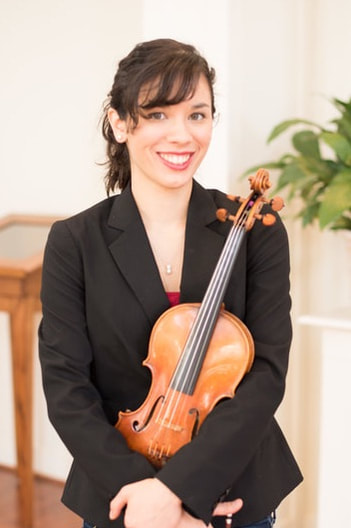It's true, Perpetual Motion haunts my sleep. Out of sheer survival instinct, I've developed a variety of ways to both prepare students for Perpetual Motion so that when they actually learn it on the violin, we get through the piece in a matter of weeks.
1. Singing
- The first thing students do is listen to Perpetual Motion and learn to sing it.
- I always have my students write their own words to their Suzuki Book 1 songs. The rules are simple: one syllable per note, to keep the rhythm steady, and the words can be anything they want. This helps the student be expressive, connect to the rhythm and pitch pattern, and remember the order. If you assign different words to repetitive phrases, they'll be easy to remember.
- Singing in solfege. I teach my students to sing solfege syllables on scales and other patterns from the first lesson. By the time they're at Perpetual Motion, singing their songs in solfege is a normal thing for them. Singing in solfege also helps them connect to the relationship between the pitches.
- IF your student is reading all the notes in the A Major Scale by this point, you can also have them sing note names.
2. Scales and Finger Patterns
- I make sure that my students can play an A Major one octave scale, the arpeggios, and the scale in broken thirds.
- I also do a ton of finger patterns featuring broken thirds and fourth fingers.
- We do the A Major Scale in two different bowings: martele in the upper half for the Perpetual Motion singles, and then detache doubles in the middle of the bow for the doubles. This prepares the bow strokes.
3. Basic Technique
- If a student is struggling with basic elements of technique such as left hand position, holding the violin up, or bow hold, I correct these through review songs or supplemental repertoire before tackling Perpetual Motion.
4. Awareness of Musical Form
- The large scale form of Perpetual Motion is A B C A (using 4-bar phrases). That can be broken down into a a' b b' c c a a' (using 2-bar phrases). I write this on the music for the student and sing through the piece with them so they can see where exactly each section is.
- I always point out that the difference between a and a' is that a ends on the note E and a' ends on the note A. The same goes for b and b'.
- Any awareness of patterns will help build the connection between the student and the piece.
Once you've prepared the student to sing the song in a variety of ways, trained their fingers to do all the patterns required in the piece, and trained the bow to do the different bow strokes, teaching them the actual piece goes much, much smoother.
I hope this helps students, parents, and teachers who are working on Perpetual Motion, and I'd love to hear any tips or tricks you have for teaching it!

 RSS Feed
RSS Feed